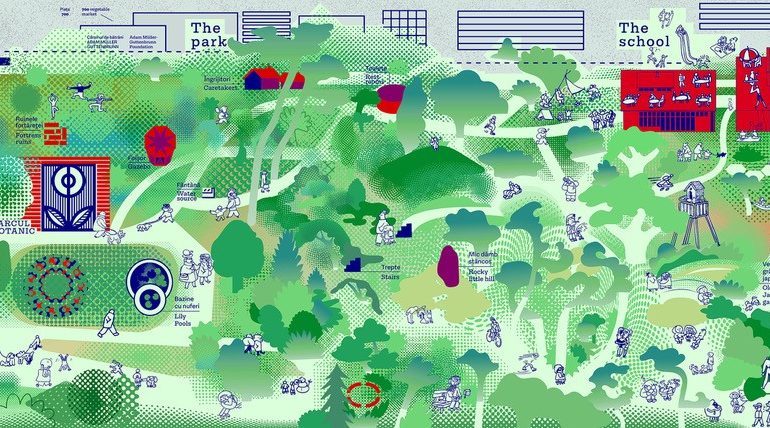The team BMA is embarking on a unique European adventure: a close partnership with Beta – Timișoara Architecture Biennial 2026. This project is part of a process of mutual learning and the exchange of good practices between European public institutions engaged in the transformation of the built environment.
This partnership is made possible through the New European Bauhaus (NEB) framework — an interdisciplinary initiative of the European Union that encourages cross-border collaboration among member states around shared principles of sustainability, inclusion, and aesthetics. In this context, the dialogue between Brussels and Timișoara serves as a concrete example of how European cities can learn from each other, strengthening their collective capacities in responsible architectural practice and public design governance.
The support of HouseEurope! further highlights the urgency and importance of this approach, which aligns with a broader European movement advocating for reuse, care for existing buildings, and the reactivation of neglected places by bringing them back into use.
In Practice – as opposed to ‘in theory’ questions the way architecture biennials often privilege staging and scenography over concrete actions rooted in place. In this spirit, the 2026 edition of Beta proposes to redirect resources and energy towards real, site-specific interventions. The biennial thus becomes an experimental construction site — a testing ground where projects are built, negotiated, and leave long-lasting traces.
An old technical college in the city of Timisoara will serve as the main field of exploration for the 2026 edition.
This building will be approached as a living laboratory, at once a construction site, an exhibition venue, and a shared learning environment all under one roof.
In this context, Beta (curators: Andreas Kofler et Tudor Vlasceanu) is today launching in Romania three open calls, developed in dialogue with the BMA team. These calls are primarily addressed to local and national participants while remaining open to international actors, with the aim of maintaining a balanced distribution between participants from different backgrounds.
These calls raise question about:
The spatial Repairs & Transformative Interventions
In-situ interventions, whether small or structural, that repair, reinvent, or requalify spaces within the building.
Teams are invited to test new ways of using the site: opening passages, creating connections, proposing structural additions, or revisiting existing architectural elements.
The thresholds & Transitions
Precise gestures that reactivate outdoor areas, circulation routes, and transitional zones — from the building to the adjacent botanical garden.
The aim is to intervene with care, working with what already exists: furniture, pathways, ramps, signage, micro-structures, mobile devices…
The office Residencies
A six-week programme in which, each week, a different office becomes the “office in residence”, working on a specific theme related to the transformation of the building: future uses, circulation, engineering, façades, materials, etc.
Each team leaves traces, questions what the previous group has done, and hands over the work in a public moment every Friday.
